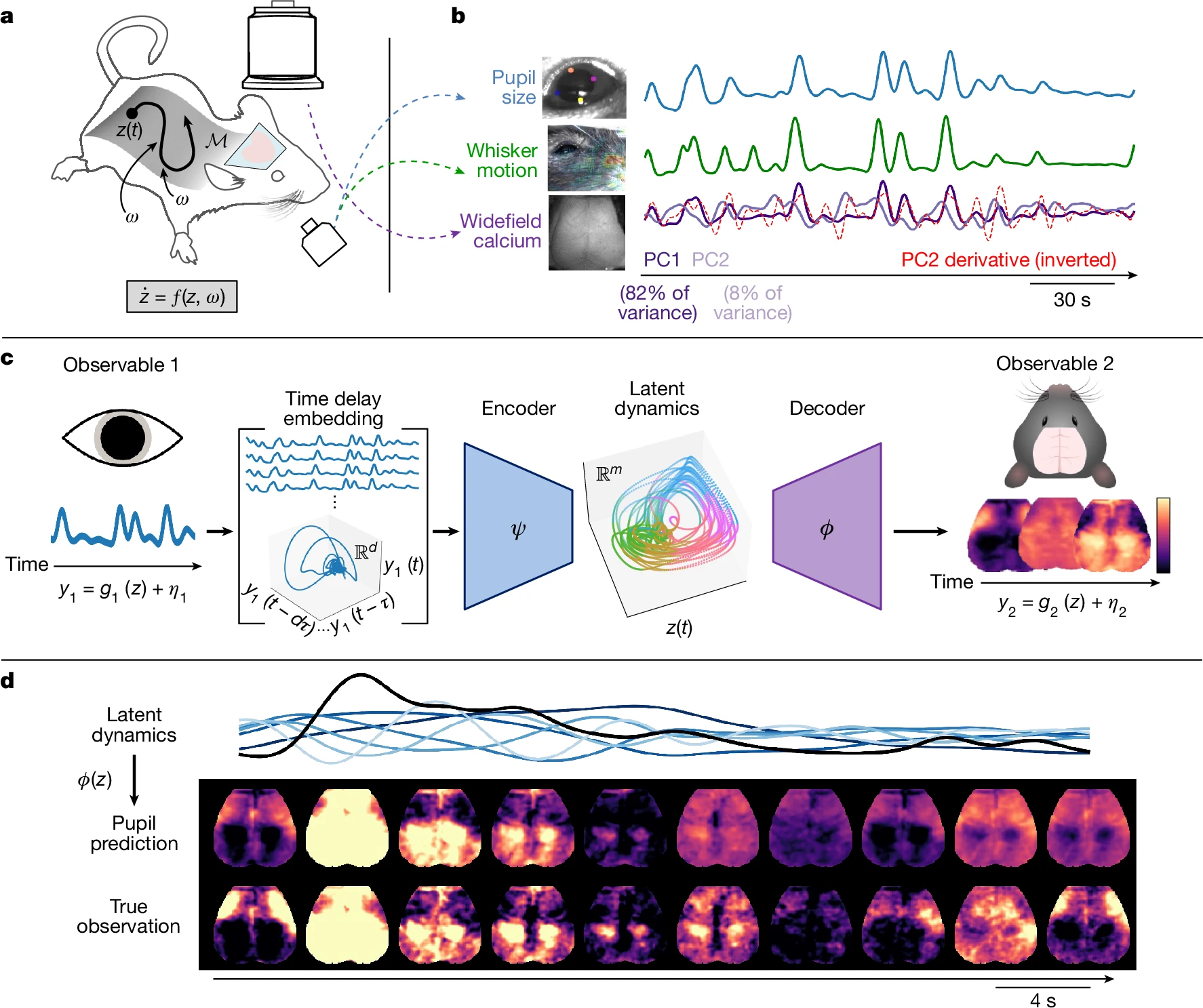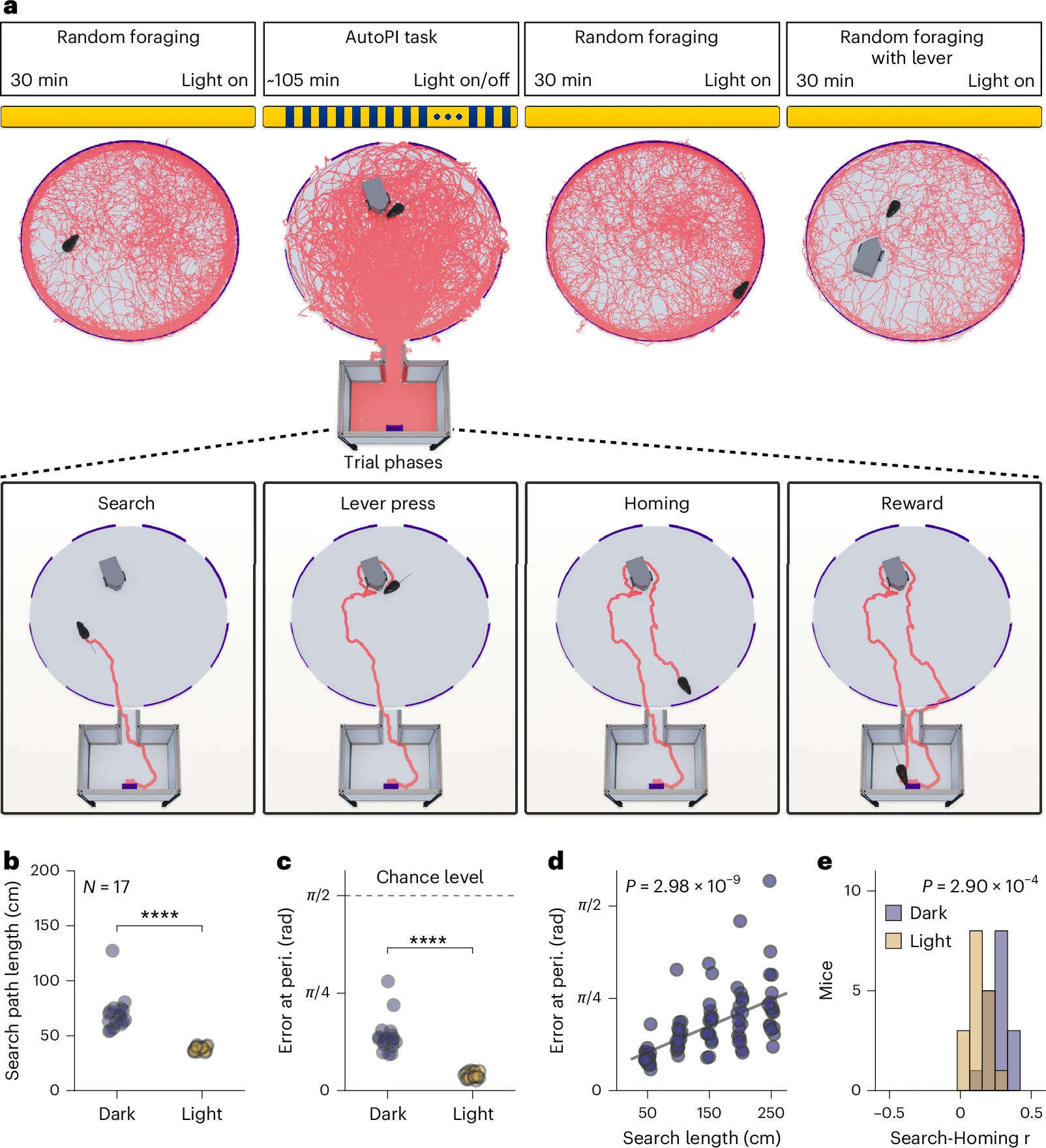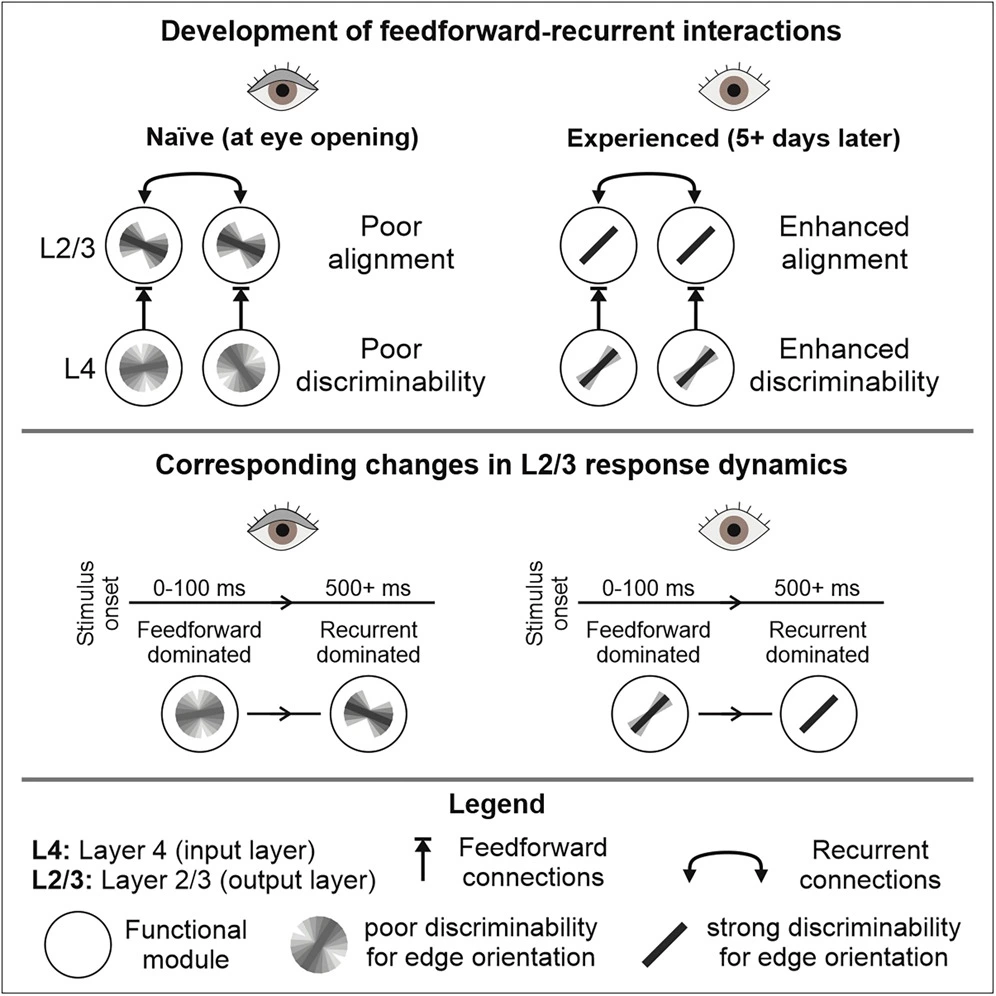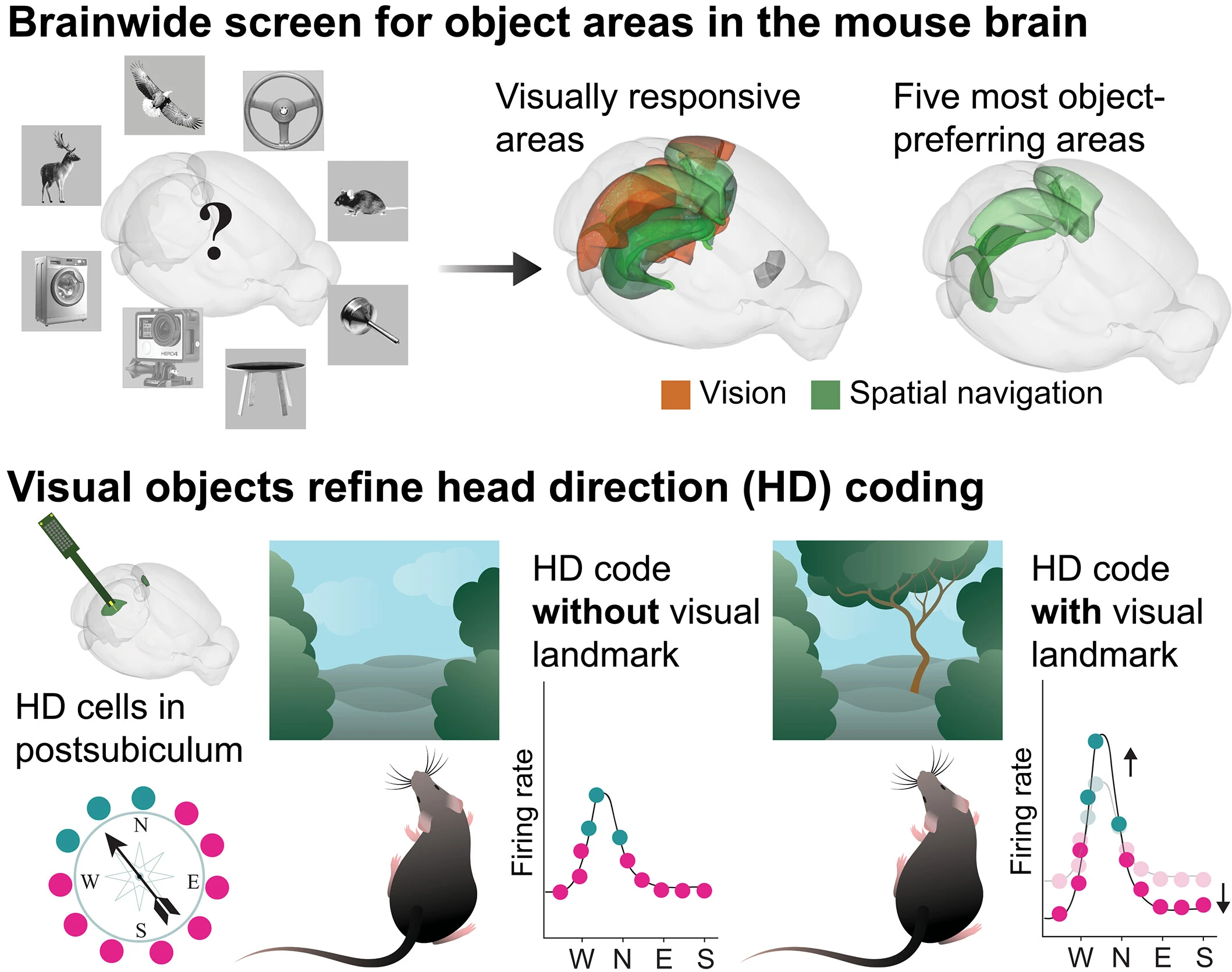September 2025
Neural studies reveal dynamic neural manifolds in arousal, decision-making, spatial coding, cortical development, and object-centered navigation.
Arousal as a universal embedding for spatiotemporal brain dynamics

- Core Hypothesis: Arousal fluctuations are not mere global modulators but reflect a low-dimensional dynamical system governing brain- and body-wide physiology. Pupil diameter, a scalar measurement, was sufficient to reconstruct the latent arousal manifold underlying multimodal neural activity.
- Empirical Method: Using time-delay embedding of pupil diameter, researchers reconstructed a nonlinear latent manifold that predicted the continuous evolution of calcium, oxidative metabolism (FAF), and haemodynamic (BOLD) signals across the cortex.
- Universal Embedding: This manifold explained both shared and orthogonal variance components, capturing structured phase relationships (propagation dynamics) in the data. The model revealed that arousal behaves as a self-sustaining, low-dimensional attractor coordinating high-dimensional brain observables.
- Integration Across Modalities: Diverse measurements (e.g., hippocampal theta:delta ratio, cortical gamma power, running speed, SWR rate) aligned along a unified ‘arousal cycle’, demonstrating that global fluctuations in neural activity are projections of a single, organism-wide latent process.
Transitions in dynamical regime and neural mode during perceptual decisions

- Approach: Large-scale simultaneous recordings from rat frontal cortex and striatum were analyzed with FINDR (Flow-field inference using deep recurrent networks), which models neural population trajectories as low-dimensional stochastic dynamical systems.
- Sequential Regimes: Neural trajectories evolved through two regimes: an early sensory-input–driven accumulation phase, and a later autonomous dynamical regime that marked decision commitment, corresponding to a rotation in neural flow direction (orthogonal mode switch).
- Neural Commitment Time (nTc): A new model, the Multimode Drift Diffusion Model (MMDDM), inferred a neurally defined time of commitment per trial (nTc), after which sensory evidence no longer influenced the eventual choice. Behavioral alignment to nTc confirmed this prediction.
- Model Power: The model unified ramping and stepping single-neuron activity under one dynamical framework, explaining curved low-dimensional trajectories across trials and identifying a rapid state transition in the neural manifold as the act of commitment itself.
Grid cells accurately track movement during path integration-based navigation despite switching reference frames

- Key Finding: During the AutoPI (automated path integration) task, grid cells in the medial entorhinal cortex lost their stable hexagonal firing pattern seen during random foraging, indicating that grid cells do not maintain a global coordinate system when navigating by self-motion.
- Reference Frame Switching: Instead of a single global map, grid cells dynamically reanchored between multiple local reference frames, notably translating their grid pattern toward task-relevant objects (e.g., a lever), without systematic rotation—suggesting that the intrinsic manifold of grid-cell population dynamics remains preserved across reference frames.
- Mechanistic Insight: The translational (rather than rotational) reanchoring implies that the underlying attractor manifold of the grid system is stable, and only its embedding shifts in real space. This preserves topological continuity across environments.
- Decoding and Drift: Using a deep recurrent neural network decoder operating in toroidal space, researchers found that within-trial drift in grid orientation predicted the mouse’s homing direction, linking internal representational drift to behavioral navigation performance.
Development of coherent cortical responses reflects increased discriminability of feedforward inputs and their alignment with recurrent circuits

- Objective: This study investigated how reliable and coherent cortical representations emerge during development in the ferret visual cortex, focusing on how feedforward inputs from layer 4 (L4) and recurrent circuits in layers 2/3 (L2/3) align over time as visual experience accumulates.
- Key Finding: In visually naïve ferrets, coactivity between L4 and L2/3 neurons lacked orientation specificity. After eye opening, stimulus discriminability in L4 improved, and feedforward inputs became aligned with recurrent L2/3 circuits, leading to increased temporal and interlaminar coherence in cortical responses.
- Mechanism: The alignment process involved both enhanced orientation selectivity of L4 neurons and the strengthening of L2/3 recurrent connectivity patterns. Computational modeling confirmed that this alignment amplifies reliable network activity and supports stable orientation maps.
- Implication: Experience-dependent increases in input discriminability and circuit alignment together promote the development of robust, modular sensory representations, revealing a circuit-level mechanism by which perceptual reliability emerges in the maturing cortex.
Visual objects refine head direction coding

- Discovery: A brainwide functional ultrasound screen identified that spatial navigation regions, especially the postsubiculum (PoSub), showed stronger responses to visual objects than to scrambled images, unlike visual cortical areas.
- Electrophysiological Findings: In PoSub, head-direction (HD) cells were excited when facing visual objects and inhibited when facing away, revealing object-centered modulation of directional tuning both in head-fixed and freely moving conditions.
- Mechanistic Modeling: A Supralinear Stabilized Network (SSN) model captured this bidirectional modulation, showing that untuned visual inputs interacting with the HD ring attractor can sharpen population codes toward salient visual landmarks.
- Conclusion: Visual objects dynamically enhance the precision and stability of head direction coding, suggesting that landmarks actively refine internal compass representations rather than merely anchoring them passively.
References
- 1
- 2
- 3
- 4
- 5